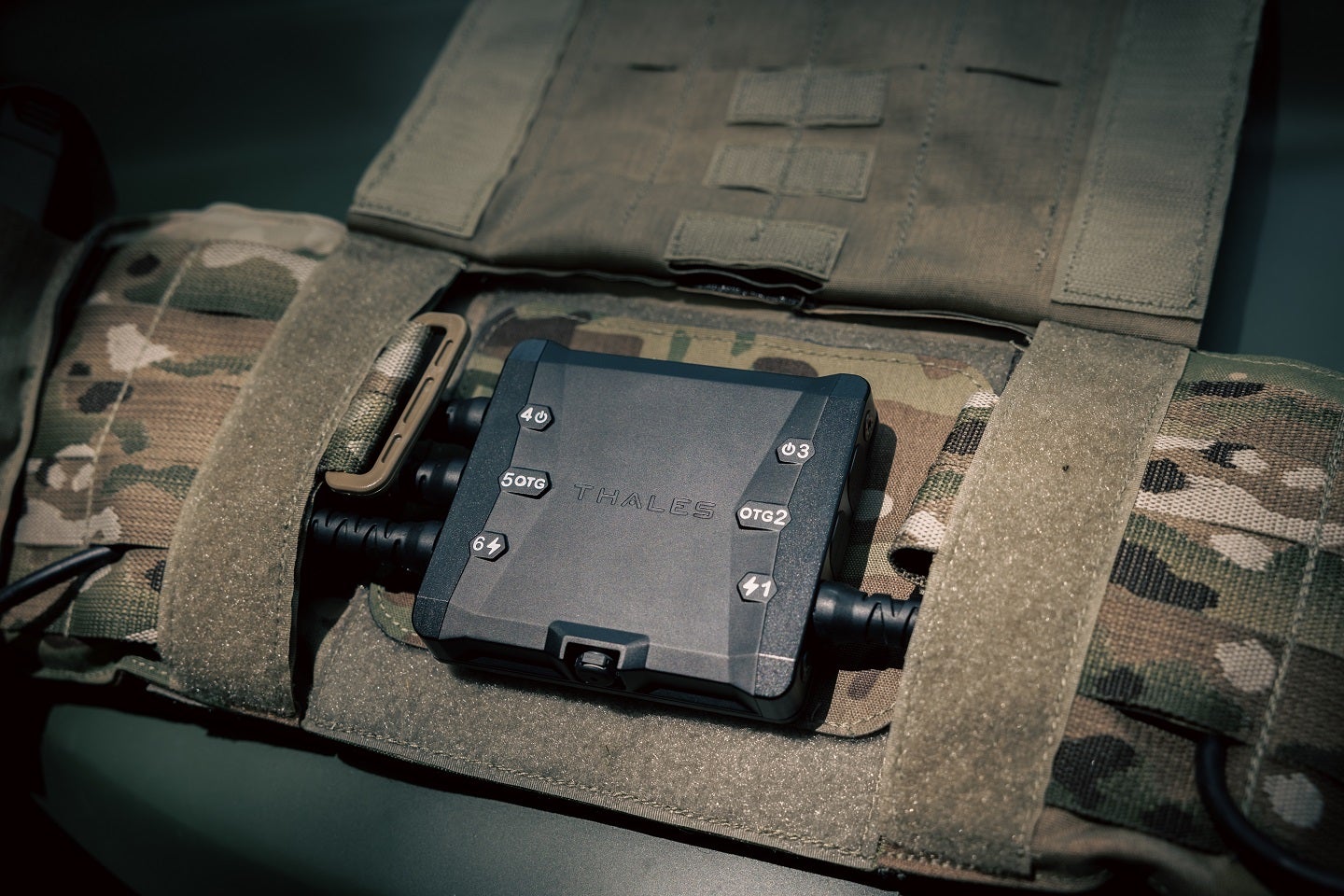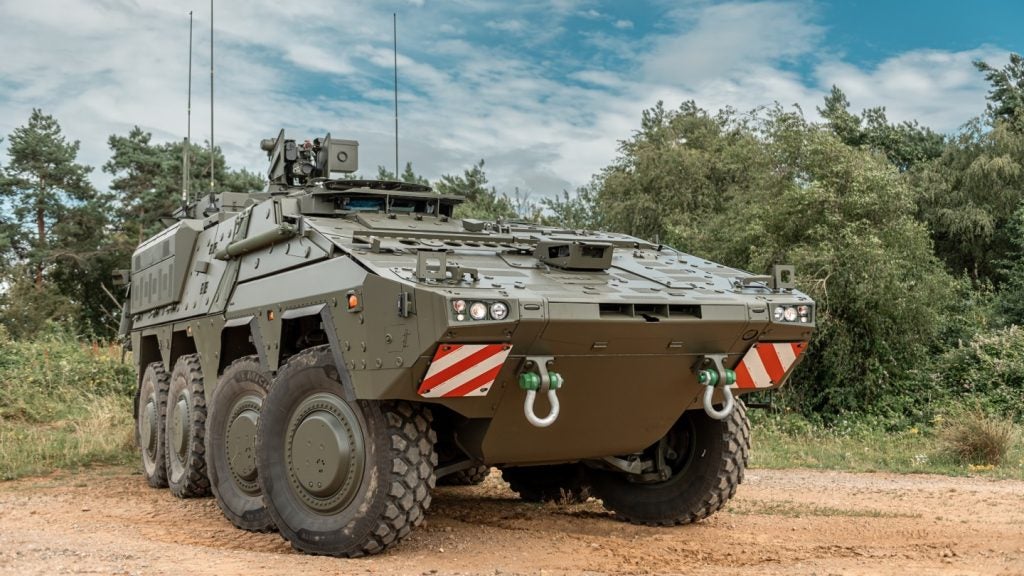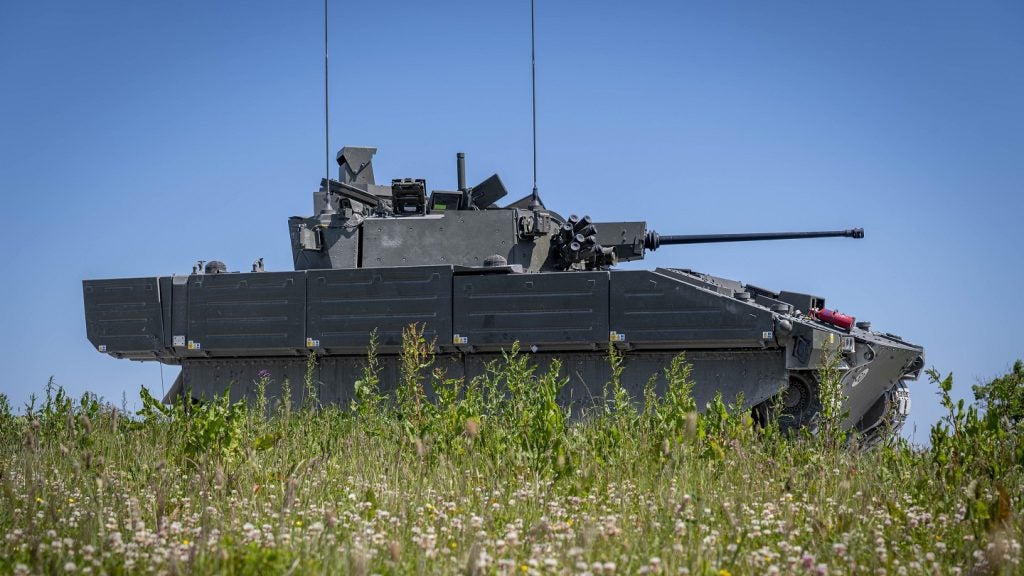
Industries face the enduring problem of providing the optimal degree of versatility for soldiers in the dismounted battlespace. Their attempts to balance capability with size, weight, power and cost becomes an absurd juggling act at times.
Yet, in the age of digital warfare, balancing these considerations is essential to enable the modern soldier to work in an environment where access to large bandwidths cannot be guaranteed. The seamless sharing of actionable data is a prized capability that gives military units the competitive edge.
Thales offers its new SHArc – soldier harness architecture – as its solution for the capacity of dismounted soldiers to share data as effectively as possible across their networks. This soldier-worn power and data hub was showcased at the Future Soldier Technology conference on 8 March.
The SHArc is essentially an enabling hub that allows soldiers to scale their data processing capacity in environments deprived of large bandwidths. This is achieved by several means: through integration with other devices, to provision a centralised power architecture, and by enabling automatic over-the-air transmission of data.
Soldier integration
“Our aim is to deliver a ‘network-agnostic’ intelligent soldier-worn power and data hub,” a Thales spokesperson expressed to Army Technology.
“Although we see an increasing number of digital soldier devices coming onto the market, there are still a number of legacy devices in service around the world,” Thales continued. “SHArc is designed to enable digital device integration but can also integrate many legacy devices.”
This means that all connected devices can seamlessly exchange data, reducing cognitive burden on soldiers and increasing operational tempo.
The data that is sent over to tactical networks needs to be filtered to prevent the transmission of meaningless data noise. Smart hubs like the SHArc can help enormously, they can be programmed to send very small data messages over the network from a digital sensor which may generate quite large amounts of data, which just contains the essential information needed by other soldiers in a unit, or command and control (C2).
The SHArc is a versatile data hub with the capability to enable other devices like AI processors, if there is room for scaling up AI capability. Where we would see SHArc having a role in this system is integrating the processor with other devices, enabling power provision from the central power architecture, and in filtering data to be sent over the network.
“For example, you could have a digital camera connected to the processor and tactical radio through the SHArc. A soldier equipped with these devices takes a picture of an individual at a check point with the camera, the SHArc sends the image to the processor which has facial recognition AI, the individual is identified as a ‘person of interest’, the SHArc receives that information and is programmed to automatically send a message to the Soldier’s Commander over the network, which is displayed through the Commander’s End User Device saying ‘Person of interest identified at location x by Soldier y’.
“In this way, AI capabilities are utilised without sending large amounts of data over the tactical network,” Thales stated.
Operator scalability
Ultimately it will be for the end-user to decide what capabilities they use and to what extent. The unique aspect Thales offers is that the SHArc is an enabling hub that may be used scalably.
“We believe the answer lies in designing architectures that mean capabilities like AI can be deployed in bandwidth-limited environments, and that SHArc could be a key enabler of that,” Thales asserted.
Even if the capability is worthwhile, industries cannot endlessly add to the dismounted soldier’s load at the expense of their ability to operate effectively. This is why Thales’s engineering solution is more of a compromise – as power consumption translates directly into weight in the Soldier System space.
“A good example is the selection of the processor for the hub, which is optimised to provide the processing power required at an acceptable power consumption. A more powerful processor could have been chosen, which would have given more capability, but the hub itself would have needed to be bigger (it weighs about 250g), and it would have required several 100s of grams more batteries to power it,” the company remarked.
The scalability of the SHArc solution is provided by the ability to “daisy chain” hubs together, giving more available ports for Soldiers with more demanding configurations (like forward artillery or air observers). For many, one hub will be sufficient. A single-type solution also has benefits in terms of logistic simplicity.







